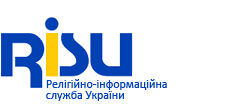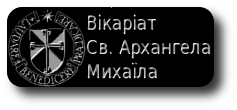
Vatican visit to CERN opens new channel of dialogue for science, faith
10-06-2009
VATICAN CITY (CNS) -- A recent visit by a Vatican delegation to CERN -- one of the world's largest centers for scientific research -- has opened up an important channel of communication between science and faith, said the Vatican representative to U.N. agencies in Geneva.
Archbishop Silvano Tomasi, the representative, was part of the delegation led by Cardinal Giovanni Lajolo, president of the commission governing Vatican City. The head of the Vatican Observatory, Jesuit Father Jose Funes, and a Vatican astronomer, U.S. Jesuit Brother Guy Consolmagno, were also part of delegation visiting the world's largest particle physics laboratory in Geneva June 3.
The director-general of CERN, Rolf-Dieter Heuer, was interested in having the Vatican come to the world famous facility "because he wanted this visit to be a way to establish a link to the Holy See," Archbishop Tomasi told Catholic News Service by phone June 9.
The idea of having the Vatican visit CERN came from Ugo Amaldi, the president of TERA Foundation, which collaborates closely with CERN in finding ways to apply atomic research in treating cancer, especially in children, said the archbishop.
In an e-mail response to questions by CNS, Cardinal Lajolo said he "gladly accepted the invitation to visit CERN because of my own interest regarding the farthest limits that astrophysical science is striving to reach with proton acceleration."
He said the discovery of new sub-atomic particles may help confirm Princeton University professor Edward Witten's Superstring Theory, which seeks to unify Albert Einstein's general theory of relativity and quantum physics.
Archbishop Tomasi said, "The issue that emerged from the visit was how to maintain contact" because scientists studying the universe ask many of the same questions theologians ponder such as what is the meaning of life.
However, the methods scientists and theologians use for answering those questions are radically different and put them in "two completely different worlds," he said.
"There is no hostility between the two, but there is a need to talk across this border and see how human knowledge can be advanced," he said.
Heuer has been invited to visit the Vatican, the archbishop said, but no date has been set.
In an opening statement during a roundtable discussion on science and faith in dialogue June 3, Cardinal Lajolo said scientific truths and theological truths can never contradict each other because all truths "are derived from the same source, which is God."
He quoted St. Robert Bellarmine, the doctor of the church who had been involved in the Vatican's investigation of Galileo Galilei. Then-Cardinal Bellarmine said if a scientific statement turns out to be evidently true and appears to not be in complete conformity with sacred Scripture, then "one needs to research how sacred Scripture can be interpreted correctly so as not to contradict scientific truth."
Cardinal Lajolo said this statement "still remains a valid principle in dealing with scientific statements" today.
The Catholic Church is a defender of reason and truth, which "is why the church later recognized the scientific position held by Galileo and the error committed in condemning him," said the cardinal.
Archbishop Tomasi said, "There were very good feelings, a good atmosphere during the visit and some frank exchange" between Vatican representatives and the CERN scientists.
"A good channel of communication has been established" with CERN and its scientists, even with those who don't believe in any religion, he said.
The Vatican delegation was given an official welcome to the CERN facilities and had a chance to learn more about the laboratory's activities, he said.
They were given a tour of CERN's underground Large Hadron Collider, which is the world's largest high-energy particle accelerator used in experiments for trying to better understand the universe and what happened immediately after the Big Bang.
The accelerator is expected to be up and running again in September after it suffered damage during early experiments last fall.
http://www.catholicnews.com/data/stories/cns/0902657.htm














